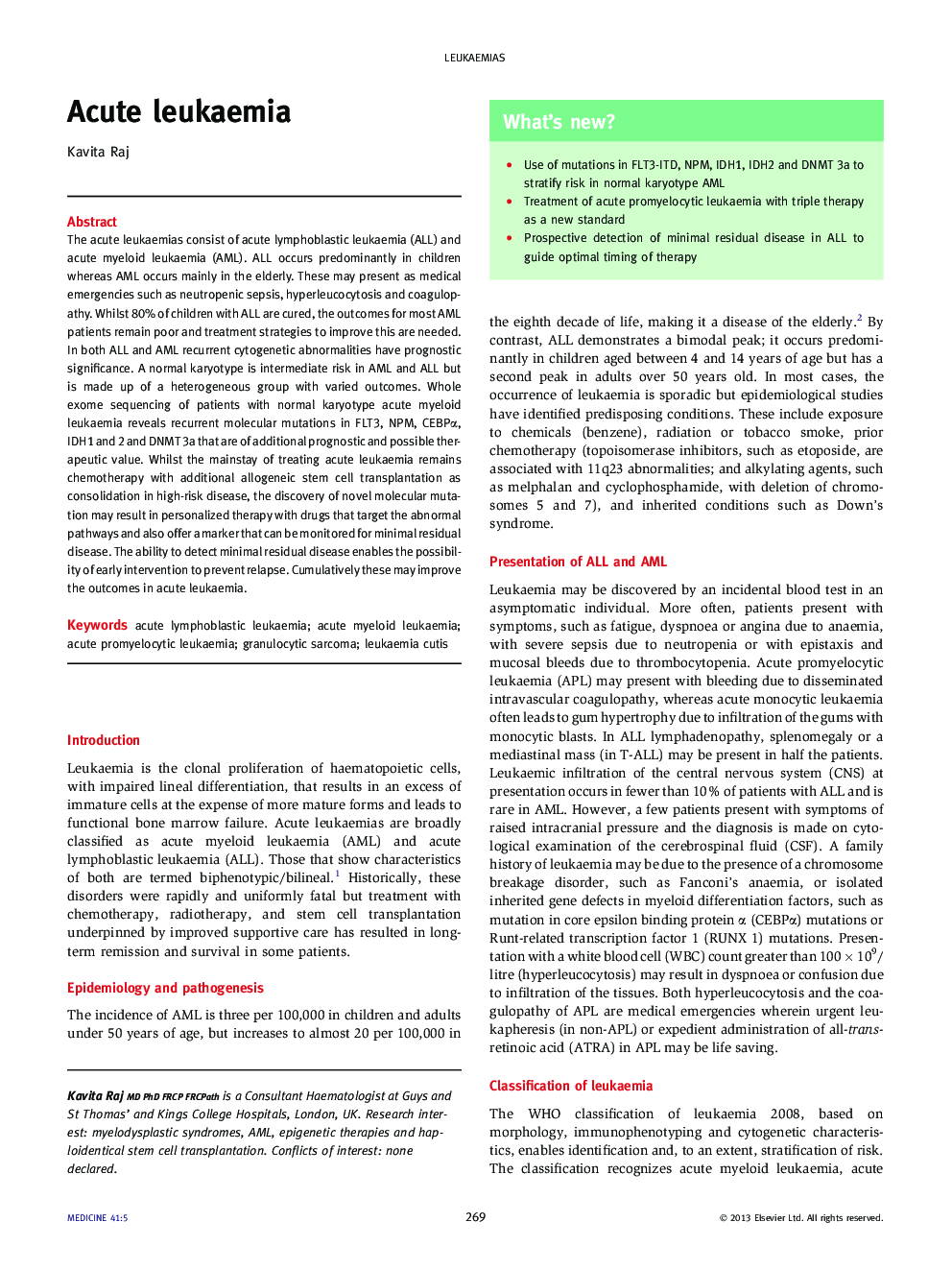| Article ID | Journal | Published Year | Pages | File Type |
|---|---|---|---|---|
| 3803878 | Medicine | 2013 | 6 Pages |
The acute leukaemias consist of acute lymphoblastic leukaemia (ALL) and acute myeloid leukaemia (AML). ALL occurs predominantly in children whereas AML occurs mainly in the elderly. These may present as medical emergencies such as neutropenic sepsis, hyperleucocytosis and coagulopathy. Whilst 80% of children with ALL are cured, the outcomes for most AML patients remain poor and treatment strategies to improve this are needed. In both ALL and AML recurrent cytogenetic abnormalities have prognostic significance. A normal karyotype is intermediate risk in AML and ALL but is made up of a heterogeneous group with varied outcomes. Whole exome sequencing of patients with normal karyotype acute myeloid leukaemia reveals recurrent molecular mutations in FLT3, NPM, CEBPα, IDH1 and 2 and DNMT 3a that are of additional prognostic and possible therapeutic value. Whilst the mainstay of treating acute leukaemia remains chemotherapy with additional allogeneic stem cell transplantation as consolidation in high-risk disease, the discovery of novel molecular mutation may result in personalized therapy with drugs that target the abnormal pathways and also offer a marker that can be monitored for minimal residual disease. The ability to detect minimal residual disease enables the possibility of early intervention to prevent relapse. Cumulatively these may improve the outcomes in acute leukaemia.
